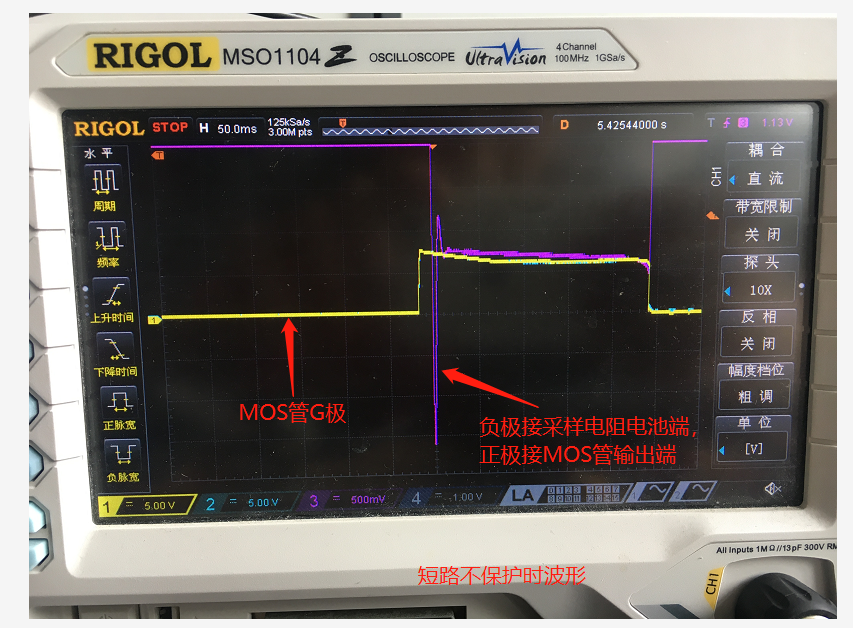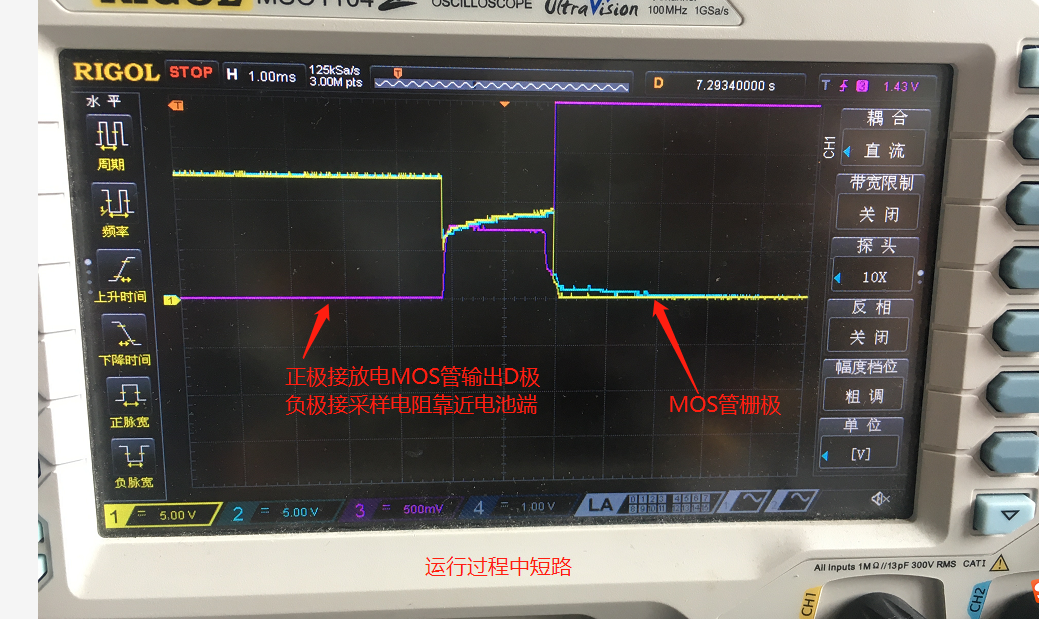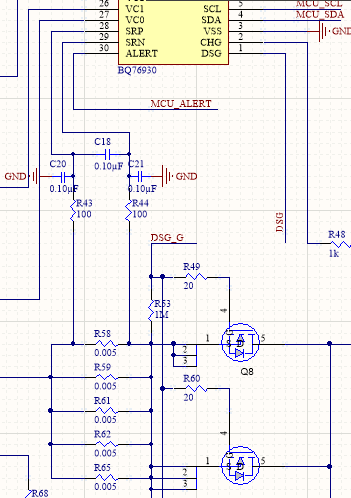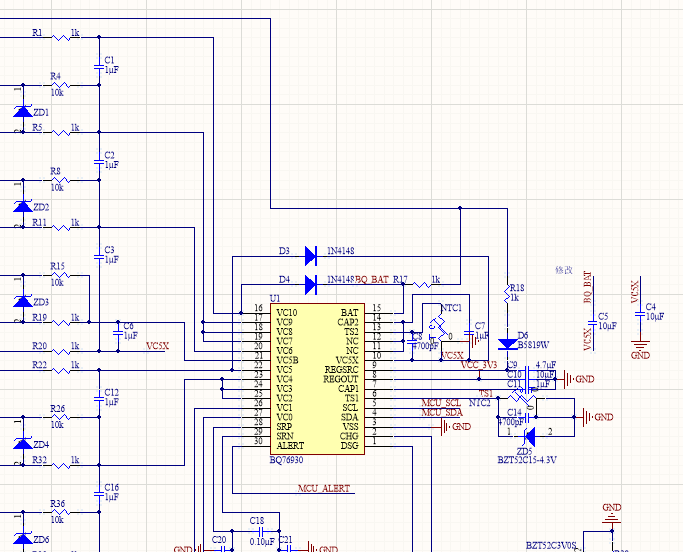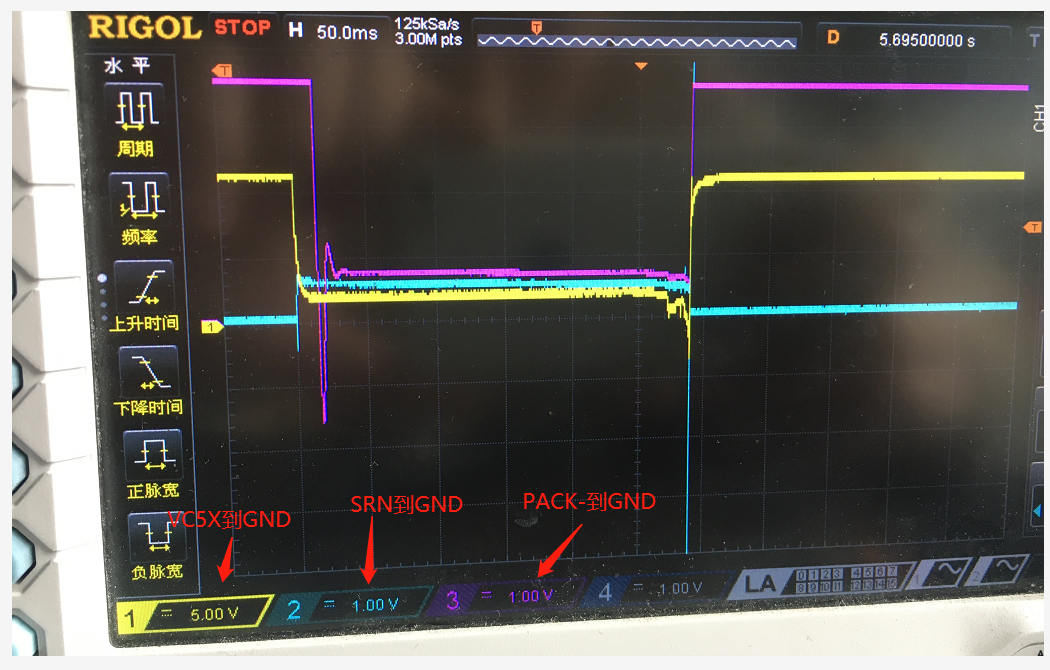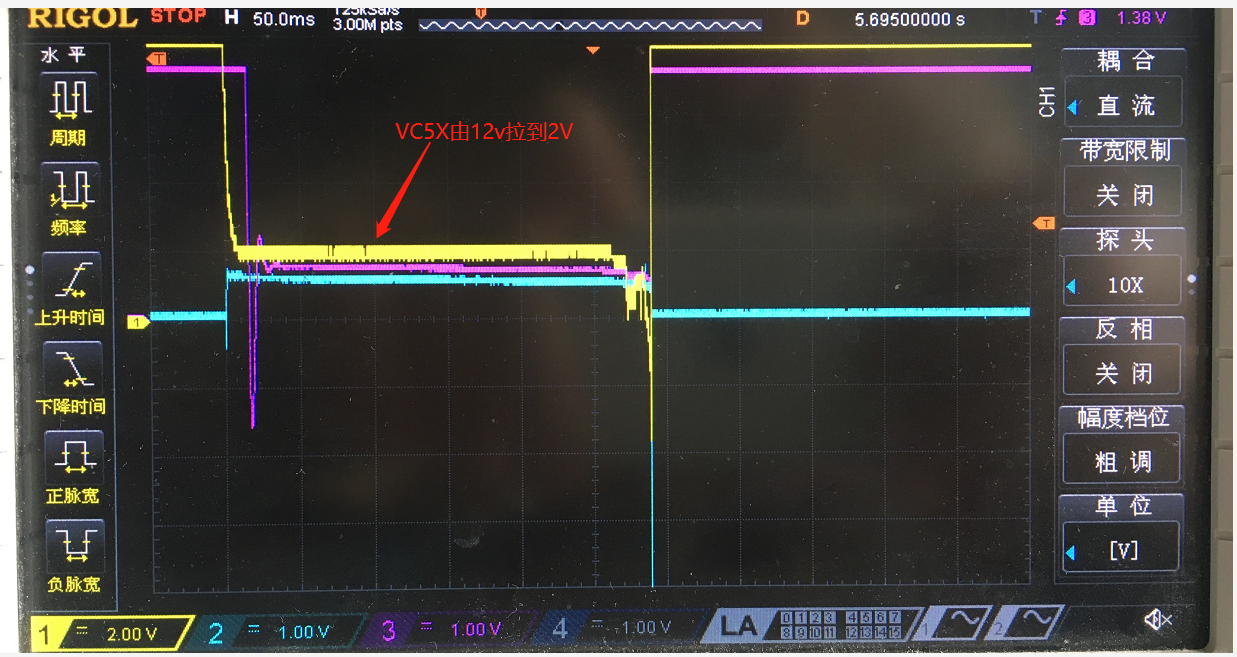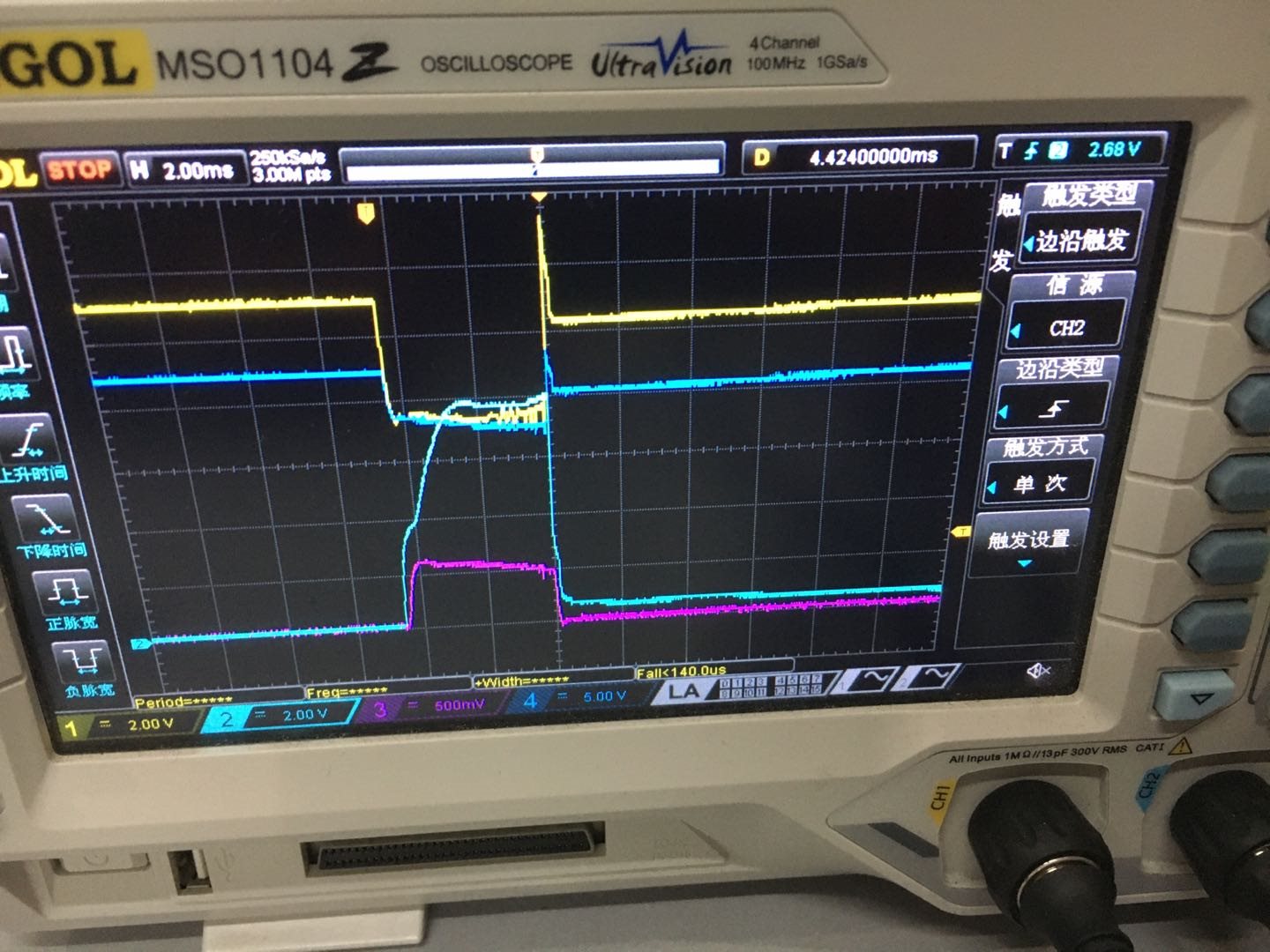Other Parts Discussed in Thread: BQ76940
Hi
The customer test with BQ76930, R-sense is 1 mohm, the short-circuit protection current is set to 155A, and the short-circuit protection time is 70us.
1, Short the load before turning on the MOS tube, and then turn on the MOS. The purple waveform of the oscilloscope shows that the negative pole of the probe is connected to the sampling resistor close to the battery terminal, and the positive pole is connected to the discharge MOS output terminal D. The peak short-circuit current exceeds 1000A. There is no protection if the time exceeds 250MS, until the busbar is blown, the MOS tube is not damaged and can work normally. The yellow waveform is the level of the MOS gate, which is always high. The SYS_STAT register is 0x00
2, During normal operation after turning on MOS, if a copper pillar is used to short the load, it can be protected. The highest current sampled by the oscilloscope is more than 750A. The total time from short circuit to MOS turn-off is about 2MS. It doesn’t feel right, but the short-circuit protection works normally, turnning off the MOS. The SYS_STAT register is 0x82
Please give some suggestions
Thanks
Star


